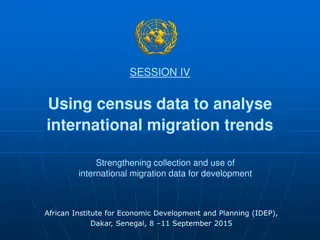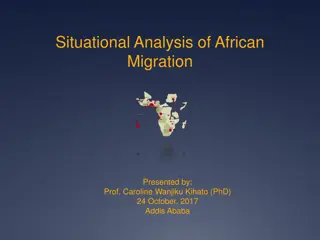Key Points on FRQ Success: Definitions, Reading Comprehension, and Image Referencing
When receiving FRQ feedback, ensure full definitions are provided, understand command verbs, reference readings effectively, and respond specifically to image-related questions. Be attentive to key areas for point loss and aim for specific, on-target responses to enhance success in FRQ evaluations. Moving forward, maintain focus and accuracy in FRQ responses while being mindful of the re-take policy to maximize learning opportunities.
Download Presentation

Please find below an Image/Link to download the presentation.
The content on the website is provided AS IS for your information and personal use only. It may not be sold, licensed, or shared on other websites without obtaining consent from the author. Download presentation by click this link. If you encounter any issues during the download, it is possible that the publisher has removed the file from their server.
E N D
Presentation Transcript
FRQ NOTES When you get your FRQ s back; make sure you re looking at the rubric. Ask questions if you have some. Key areas where points are being lost: Not having a full definition An abridged definition isn t going to work, there are key parts of the definition you need to make sure you re including. Example: Demographic momentum has to do with fertility rates Example: Dependency ratio has to do with economically dependent Discuss is the most involved command verb; it requires you to list a negative aspect or an alternative consideration Know your command verbs to help yourself out
FRQ NOTES CONT. There s always a question that is looking specifically for something from the readings That s why you need to read If you don t understand a concept from the reading you should be asking about it Questions that refer to an image or a chart, in the A, B, or C part means that YOU have to refer to that image and identify a specific part of the image or chart you are talking about most people are good about this. Just because there is an image, it doesn t mean you have to refer to it, see note above, if the A, B, or C (sometimes E) part doesn t mention referring to the image, then treat it as a standalone response.
MOVING FORWARD. We ve been kind. FRQ s need to be specific and on-target. A great example is the epidemiological model; it has specific focuses on cause of death at the end of their life, not simply Stage 4 . we ve given those points. Malthus is another example. We ve been SUPER kind You can t always count on FRQ re-takes being as easy as they have been. We ve also been flexible in the re-take policy, which is two re-take per 9 weeks. That means you can only count on two per 9 weeks, not what we ve been doing (you come, you take it). After Immigration, we pick up the pace and amount of content per Unit.
MIGRATION This unit is Population Geography; which focuses on the distribution of people around the world Migration moves those people to various places I ve emigrated from Egypt to immigrate to Iceland for good. Emigrate is to leave a native country, immigrate is to settle in a new country. We look at immigration on multiple scales. Intraregional/internal migration (movement within a country) Interregional (movement outside of a country) (Look for the a in most things, it tells you if it s within or outside of)
MIGRATION VS. MOVEMENT Migration: permanent relocation of one s place of residence considered to be long-distance move (Malinowski, 2014) Cyclical movements: move back and forth between two or more places (Malinowski, 2014). Technically, commuting to work is a cyclical movement Transhumance is a type of cyclical movement (pastoralists people with live stock) moving Seasonal movements of people working on crops is another example. Periodic movements: VERY similar to cyclical movements, but the length of time away is longer. Military and going to college are examples
TYPES OF MIGRATION: THE BROAD TYPES Voluntary Migration: long term or voluntary move that stems from choice (Greiner, 2011). Example: You move to California because you want to be a vegan and live on the beach riding the waves. Forced Migration: occurs when a person, group, government, or other entity insists that another individual or group must relocate (Greiner, 2011). Impelled migration is a bit less forceful, but is still forced. Usually a pre-cursor to genocide. Lot s of examples fall under this; forced because of no jobs, religious intolerance, violence, food insecurity (not enough food in region) Slave trade is an example. Convicts to Australia is an example.
DESTINATION AMERICA VIDEO *NOTE VOLUNTARY AND FORCE IS ABOUT PERSPECTIVES, SO YOU ALWAYS NEEDS TO EXPLAIN. Example From Video Manual (From Mexico) Broad Type of Migration It s voluntary in that he is choosing to go, you could argue forced because of lack of jobs. It s better as voluntary . It s voluntary in that they chose to come on their own; they were not forced. The Norwegians It s better as forced migration because of the widespread famine within the region of Ireland. The Irish
PUSH & PULL FACTORS: THE OPPOSITE GAME Push factors: unfavorable conditions or attributes of a place that encourage migration (Greiner, 2011). Pull factors: favorable conditions or attributes of a place that attract migrants (Greiner, 2011). Example From Video Push Factors Pull Factors Manual (From Mexico) Needs a Job Jobs in U.S. The Norwegians Limited Land Land in U.S. The Irish No Food Food in U.S.
INTERVENING OBSTACLES Intervening Obstacles: factors that complicate migration, including transportation costs, distance, moving expenses, and if it is international migration the ability to get a passport. These vary from person to person and difficulty in overcoming (Greiner, 2011). Example From Video Manual (From Mexico) Push Factors Needs a Job Intervening Obstacles Leaving Family; U.S. Border Knowledge of America & money to cross ocean. Pull Factors Jobs in U.S. The Norwegians Limited Land Land in U.S. Cost of transport (coffin ships)/Family left behind The Irish No Food Food in U.S.
RAVENSTEINS LAWS OF MIGRATION. The number of my laws are going to vary based on the textbook. You only should know at least 7 of them. Born in Germany, but became a British Citizen. Was a geographer. Lived 1834-1913. Fun fact: I wrote on gymnastics too.
LAWS WE CARE ABOUT* WHICH FOUBERG ONLY HAS 5 Most migrants cover short distances and do not cross international boundaries. Migrants moving to towns and cities create gaps or open spaces that are filled by migrants moving from more distance places. This is actually step migration. Migration involves two opposite process; dispersion (the departure of migrants from a place of origin) and absorption (the arrival of migrants in a place of destination). Migration flows produce counter-flows (people going back)
LAWS WE CARE ABOUT* CONT Urban residents are less likely to migrate than rural. Women migrate more than men within their country; whereas men migrate more frequently outside of it. When people migrate outside their country, they tend to go to stage 3 or 4 countries of the Demographic Transition Model. Urban areas are common destinations of long-distance migrations. This leads us to the Gravity Model.
ZELINSKYS MOBILITY TRANSITION MODEL *NOT IN TEXTBOOKS, BUT IN HUB READING, BUT THIS CHART DOES A GOOD JOB Mobility/Migration they re the same when referring to the Transition Model. Less likely to be an FRQ on AP, but possible, used in combination with other things, and has made appearances in Multiple Choice.
ZIPFS LAW & DISTANCE DECAY Zipf sLaw: The idea that places or things that are farther apart will have less interaction between them. The inverse of Tobler s Law. Zipf s Law is basically distance decay between cities. The idea that, all else being equal, as the distance between two places increases, the volume of interaction between these places decreases (Malinowski, 2012). this also plays into Ravenstein s laws Ravenstein observed that people move shorter distances compared to long-distances. People move to closer places rather than far away places, so, they will usually move to a close location, then another location, and eventually get to where they are going (step migration). People KNOW more about closer places.
HISTORICAL EXAMPLES (BETTER TO READ ON YOUR COMPUTER) ANSWERS/PARAPHRASES OF ASSIGNMENT























